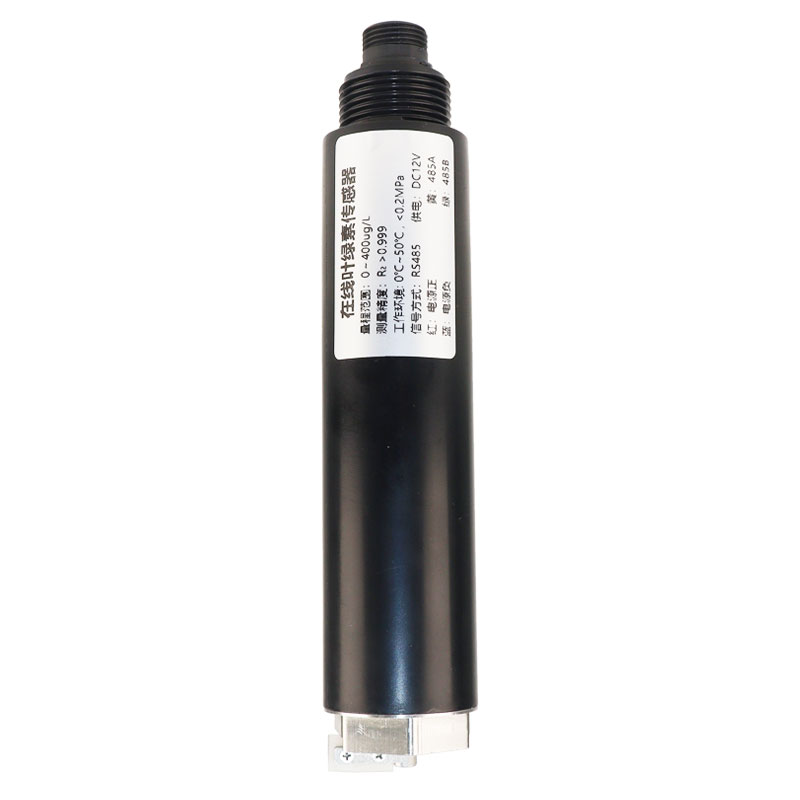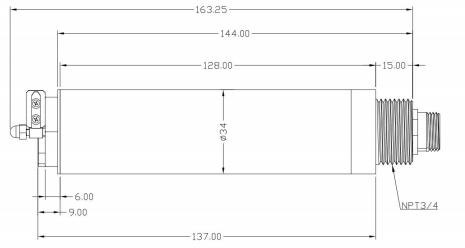Tianyi Sensor IOT Technology Co., Ltd
Sales Manager:Ms. Emily Wang
Cel,Whatsapp,Wechat:+86 15898932201
Email:info@fengtutec.com
Add:No. 155 Optoelectronic Industry Accelerator, Gaoxin District, Weifang, Shandong, China

Sales Manager:Ms. Emily Wang
Cel,Whatsapp,Wechat:+86 15898932201
Email:info@fengtutec.com
Add:No. 155 Optoelectronic Industry Accelerator, Gaoxin District, Weifang, Shandong, China

Model:FT-S15S
Brand:tianyi
one.How Chlorophyll Sensor works
Chlorophyll Sensor is an instrument based on the principle of chlorophyll fluorescence. It detects the concentration of living algae cells in water by monitoring the fluorescence of chlorophyll!Chlorophyll Sensor is a device specially designed to detect chlorophyll content.Its working principle is based on the fluorescence and light absorption characteristics of chlorophyll.
Under natural light or light sources at a specific wavelength, chlorophyll absorbs light energy and emits fluorescence.The intensity of this fluorescence is proportional to the content of chlorophyll, so the content of chlorophyll can be estimated by detecting the intensity of fluorescence.
The advantage of Chlorophyll Sensor is that it can measure chlorophyll content in real time, quickly and non-destructively.It can be used for research, investigation and monitoring of rivers, lakes, ponds, marine surveys, aquaculture, drinking water sources, algae and phytoplankton conditions.
two.Chlorophyll Sensor Technical Parameters
| Measurement principle | Fluorescence method |
| Range range | 0-400ug/L |
| Resolution | 0.01ug/L |
| Accuracy | R2>0.999 |
| Temperature compensation | Automatic temperature compensation |
| Self-cleaning function | With automatic cleaner, it can prevent biological adhesion and avoid light window contamination to ensure that long-term monitoring is still stable; it can set automatic cleaning time and cleaning times, and the power consumption is 0.7W |
| Output method | RS-485 (ModbusRTU protocol) |
| Storage temperature | -5℃~65℃ |
| Working environment | 0℃~50℃, <0.2MPa |
| Installation method | Immersive mounting, 3/4NPT mounting thread |
| Cable length | 5m |
| Power consumption | 0.4W, 12V power supply |
| powered by | DC: 12V~24V |
| Protection level | IP68 |
| Calibration method | Two-point calibration |
| Housing material | 316L stainless steel |
three.Chlorophyll Sensor size/installation
1.Chlorophyll Sensor size diagram

2.Wiring diagram
The cable is a 4-core shielded wire:
Red line—Power line (12~24V) Black line—Ground line (GND)
Green line—485B Yellow line—485A
3.Installation
1) The site can choose 6 points (3/4 NPT) threaded installation or
Installation accessories bracket installation, or other installation methods that can fix the sensor.
2) Fixed installation is preferred, and drag-chain installation is prohibited.
3) During installation, the water flow and liquid level changes should be fully considered to ensure that the water flow can cross the optical path, and the sensor is 10cm or deeper underwater.
4) Installation distance requirements: Keep it more than 3cm from the side wall and more than 10cm from the bottom.
Four.Chlorophyll Sensor Maintenance and Maintenance
1.Maintenance schedule
Maintenance project maintenance time note
Clean the sensor for 0.5 to 3 days (brushless) 4 to 8 weeks (brushed)
Sensor inspection for 6 months
Replace O-ring for 1 to 2 years
2.Maintenance method
1) Check the outer surface of the sensor and rinse the outer surface of the sensor with clean water.If there is still dirt residue, please wipe it with a moist soft cloth.For some stubborn dirt, you can add some household detergent liquid to the water to clean it.
2) Check the sensor cable to check whether there is any fracture in the outer shell of the cable.The cable should not be tight during normal operation.
3) Check the measurement window to check whether there is any dirt and wipe it with a dust-free cloth.
4) Sensor calibration can be calibrated through the upper computer software or by yourself
RS-485 sends MODBUS commands to calibrate by itself.
3.Sensor calibration
3.1 Zero Point Calibration
Use a brown beaker to measure an appropriate amount of distilled water, place the sensor vertically in the solution, and the front end of the sensor is at least 10cm away from the bottom of the beaker.After the value is stabilized, perform zero calibration.
3.2 Slope calibration
Place the sensor in a standard solution, and the front end of the sensor is at least 10 cm away from the bottom of the beaker.After the value is stabilized for 3 to 5 minutes, the slope calibration will be performed.
The wireless transmission technology of Multiparameter Weather Sensors enables remote real-time transmission of meteorological data through communication methods such as LoRa, ZigBee, and GPRS. Traditional wired sensors suffer from cumbersome cabling, which limits installation locations. In contrast...
Hydrological flow monitoring equipment plays a crucial role in water conservancy work, helping us grasp the dynamics of water resources and facilitating flood control, water dispatch, and other tasks. Below is a detailed introduction to common equipment.Water Level Monitoring StationThe battery-powe...
With the advancement of environmental science research toward refinement, traditional large-scale air monitoring stations suffer from low distribution density and limited coverage, making it difficult to capture air quality differences in small-scale areas such as urban functional zones and around p...
Odor online monitor is a professional instrument that utilizes sensor array technology to perform real-time, continuous automatic monitoring of complex odor concentrations and characteristic malodorous gases in the environment. It can quantify and output dimensionless odor concentration OU values an...